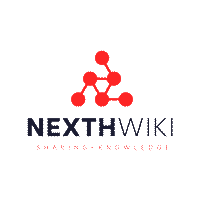Contentification: Difference between revisions
| (One intermediate revision by the same user not shown) | |||
| Line 2: | Line 2: | ||
= Contentification: Transforming Information into Engaging Content = | = Contentification: Transforming Information into Engaging Content = | ||
Contentification refers to the process of transforming information, data, and insights into engaging, consumable content. This trend has revolutionized how businesses, educators, and creators present information, making it more accessible, interesting, and shareable. | Contentification refers to '''the process of transforming information, data, and insights into engaging, consumable content'''. This trend has revolutionized how businesses, educators, and creators present information, making it more accessible, interesting, and shareable. | ||
== What is Contentification? == | == What is Contentification? == | ||
| Line 41: | Line 41: | ||
Join the contentification movement and transform your information into engaging, impactful content that resonates with your audience. | Join the contentification movement and transform your information into engaging, impactful content that resonates with your audience. | ||
=== Conclusion === | |||
In an age where attention is the ultimate currency, the ability to engage and retain users is paramount. Contentification, with its roots in gamification and guided by the '''[[Octalysis Framework]]''', offers a powerful approach to creating immersive, interactive content experiences. By understanding and leveraging the core drives that motivate human behavior, brands can craft content that not only captures attention but also fosters lasting engagement and loyalty. | |||
As we move forward, the fusion of physical and digital experiences will continue to evolve, offering new opportunities for brands to connect with their audiences in meaningful ways. Embracing contentification is not just a trend but a strategic imperative for those looking to thrive in the digital age. | |||
== See Also == | == See Also == | ||
Latest revision as of 10:59, 5 June 2024

Contentification: Transforming Information into Engaging Content
Contentification refers to the process of transforming information, data, and insights into engaging, consumable content. This trend has revolutionized how businesses, educators, and creators present information, making it more accessible, interesting, and shareable.
What is Contentification?
Contentification involves taking raw data or information and turning it into a format that is engaging for the audience. This can include articles, videos, infographics, podcasts, social media posts, and more. The goal is to make complex or dry information appealing and easy to understand.
Contentification takes the principles of gamification and applies them to content creation and distribution. This approach focuses on transforming traditional content into interactive, engaging experiences that resonate with audiences on a deeper level. By leveraging the Octalysis Framework, brands can craft content that not only captures attention but also motivates and retains users.
Key Elements of Contentification
- Storytelling: Using narrative techniques to make information more compelling and relatable.
- Multimedia Integration: Combining text, images, videos, and interactive elements to create a rich user experience.
- Audience-Centric Approach: Tailoring content to meet the needs and preferences of the target audience.
- SEO Optimization: Ensuring content is discoverable through search engines to reach a broader audience.
- Engagement Metrics: Measuring how users interact with the content to refine and improve its effectiveness.
Benefits of Contentification
- Increased Engagement: Well-crafted content captures the audience's attention and encourages interaction.
- Enhanced Learning: Transforming educational materials into engaging formats aids in better understanding and retention.
- Brand Loyalty: Consistently providing valuable and interesting content helps build a loyal audience.
- Viral Potential: Engaging content is more likely to be shared, increasing its reach and impact.
- Better Communication: Complex ideas and data are conveyed more effectively through engaging content formats.
Contentification in Different Sectors
- Education: Using videos, infographics, and interactive modules to make learning more engaging.
- Marketing: Creating compelling stories around products and services to attract and retain customers.
- Corporate Communication: Turning reports and internal communications into more digestible and engaging formats.
- Journalism: Presenting news in interactive and multimedia formats to enhance reader engagement.
- Healthcare: Simplifying medical information for patients through engaging and understandable content.
Examples of Contentification
- Explainer Videos: Short videos that break down complex topics into easy-to-understand segments.
- Interactive Infographics: Visual representations of data that allow users to interact and explore the information.
- Podcasts: Audio content that provides in-depth discussions on various topics in an engaging format.
- Social Media Stories: Short, engaging posts on platforms like Instagram and Facebook to capture quick attention.
- E-Books and Whitepapers: Detailed written content presented in a visually appealing and easily navigable format.
Future of Contentification
The future of contentification looks promising, with advancements in technology allowing for even more innovative ways to engage audiences. Virtual reality (VR), augmented reality (AR), and artificial intelligence (AI) will play significant roles in creating immersive and personalized content experiences.
Join the contentification movement and transform your information into engaging, impactful content that resonates with your audience.
Conclusion
In an age where attention is the ultimate currency, the ability to engage and retain users is paramount. Contentification, with its roots in gamification and guided by the Octalysis Framework, offers a powerful approach to creating immersive, interactive content experiences. By understanding and leveraging the core drives that motivate human behavior, brands can craft content that not only captures attention but also fosters lasting engagement and loyalty.
As we move forward, the fusion of physical and digital experiences will continue to evolve, offering new opportunities for brands to connect with their audiences in meaningful ways. Embracing contentification is not just a trend but a strategic imperative for those looking to thrive in the digital age.
See Also
References
<references />
